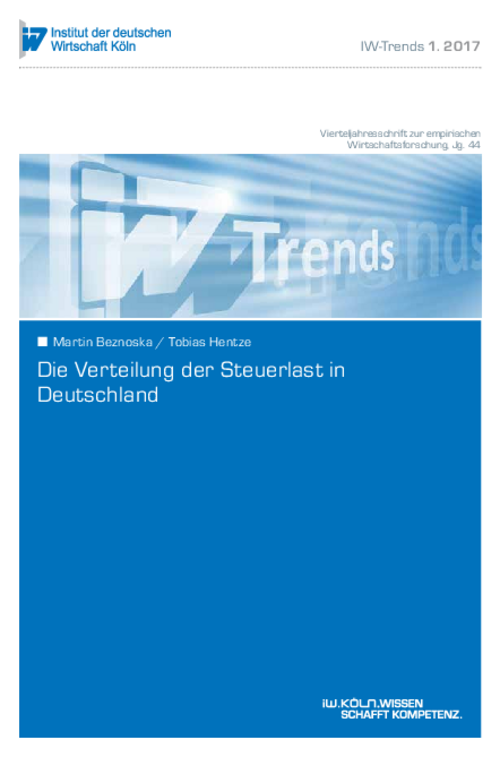An analysis of the distribution of the most revenue-productive types of tax shows that in Germany the broadest shoulders bear the heaviest burden.

The Distribution of the Tax Burden in Germany
IW-Trends

An analysis of the distribution of the most revenue-productive types of tax shows that in Germany the broadest shoulders bear the heaviest burden.
Whereas the upper decile of the household income distribution accounts for almost half of all income tax revenue, in the case of value-added tax the share is lower due to the proportional tax rate. Even here, however, at 18 per cent the top decile’s share of tax revenues is still disproportionate. While some 4.2 million tax-payers are subject to the top income tax rate of 42 per cent, 2.7 million employees pay no income tax at all due to their low earnings. For the latter value added tax represents the heaviest burden. These are the results of a microdata analysis simulating the two tax types in Germany and comparing them with private household income distribution. However, households with very high incomes are not completely captured by the data, meaning that their share of tax revenues might actually be even higher than that calculated here. Even bearing in mind the fundamental principle behind the tax system, that those with the broadest shoulders should bear the greatest burden, reforms are necessary. Largely irrespective of household type, middle income households pay around 40 per cent of their income in income tax, value added tax and national insurance contributions. Lowering income tax rates, especially for lower income levels, would not only have the advantage of relieving the individual tax burden but would also improve the incentives for taking up jobs subject to compulsory social insurance and extending working hours.

Martin Beznoska / Tobias Hentze: Die Verteilung der Steuerlast in Deutschland
IW-Trends

More on the topic

The 9th IW Survey of Further Training
In 2016 some 85 per cent of companies in Germany were active in continuing vocational training, using a broad mix of methods.
IW
Has the German Economy Reached its Limit?: Skilled Labour Shortages as a Brake on Growth
The German economy is performing significantly better than was expected in the first few months of this year. During the course of 2017, certain early fears – especially of a weakening of the global economy due to increasing protectionism – have proved ...
IW